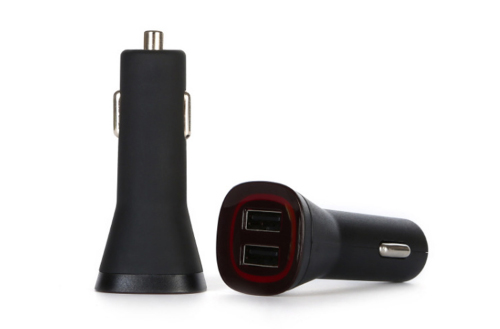Generally speaking, there are several reasons for the whistling of switch mode power supplies.
1. Poor immersion paint of transformer
Including non immersed water. Screaming and causing sharp spikes in the waveform, but generally with normal load capacity. It should be noted that the higher the output power, the stronger the whistling, while the lower the power, the less obvious the performance may be. There has been experience of poor load performance in a 72W charger product, and strict requirements for the material of the magnetic core have been found in this product. It should be noted that when the design of the transformer is poor, it is also possible to produce abnormal noise due to vibration during operation.
2. PWM IC grounding wiring error
Usually, some products may function normally, but others may not be able to load and may not vibrate properly, especially when using certain low-power ICs, which are more likely to malfunction. For example, the SG6848 test board was hastily laid out based on experience due to a lack of thorough understanding of IC performance, resulting in the inability to perform wide voltage testing during testing.
3. Wrong wiring of optocoupler working current point
When the working current resistor of the optocoupler is connected before the secondary filtering capacitor, there is also a possibility of whistling, especially when the load is increased.
4. Grounding error of reference voltage regulator IC TL431
The grounding of the same secondary reference voltage regulator IC and the grounding of the primary IC have similar requirements, that is, they cannot be directly connected to the cold and hot ground of the transformer. If connected together, the consequence is a decrease in carrying capacity and the whistling sound is proportional to the output power.
When the output load is large and approaching the power limit of the power supply, the switching transformer may enter an unstable state. The duty cycle of the switch tube in the previous cycle was too high, the conduction time was too long, and too much energy was transmitted through the high-frequency transformer; The energy storage inductor of DC rectification has not fully released its energy in this cycle. According to PWM judgment, there is no driving signal that causes the switch tube to conduct in the next cycle, or the duty cycle is too small. The switch tube remains in a cutoff state or has a short conduction time throughout the entire cycle thereafter. After more than one full cycle of energy release, the output voltage of the energy storage inductor decreases, and the duty cycle of the switching transistor in the next cycle will be larger This cycle repeats itself, causing the transformer to vibrate at lower frequencies (regular intermittent full cutoff periods, or frequencies with drastic changes in duty cycle), producing lower frequency sounds that can be heard by the human ear.
At the same time, the output voltage fluctuation will also increase compared to normal operation. When the number of intermittent full cutoff cycles per unit time reaches a considerable proportion of the total number of cycles, it may even cause the vibration frequency of transformers that originally worked in the ultrasonic frequency band to decrease and enter the audible frequency range, emitting sharp high-frequency "whistling" sounds. At this time, the switching transformer is working in a severely overloaded state, and there is always a possibility of burning out - this is the origin of many power sources' screams before burning out, and I believe some users have had similar experiences before.





